
| The Eternal Spring of Kunming is the capital city of Yunnan Province. It is a very beautiful and modern city. Every year from December to March, flocks of red-beak gulls fly thousands of miles from the north to Kunming to spend the winter. Obviously, these lovely creatures know that here they have found a place to escape the bitter coldness. Kunming is called "Spring City" because it has pleasantly warm weather al year round. |
|
|
|
|
In addition to its eternal spring, Kunming also has many scenic attractions, such as mirror-like lakes and fantastic peaks, as well as ancient pavilions and temples.
Cuihu Lake and Yuantong Mountain
 |
Cuihu Lake is like a piece of green jade laid in the northwestern corner of the city. Originally, there were nine underground springs filling the lake, hence its other name, Nine-Dragon Lake. | 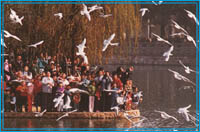 |
Early in the Qing Dynasty (1644-1911), this lake was part of the mansion of Wu Sangui, a Ming-dynasty general who surrendered to the Qing troops. This is why the towers and pavilions around the lake in one way or another reflect the magnificence of the imperial palaces. At the Haixin (Mid-lake) Pavilion and Lianhua (Lotus) Temple, many inscriptions by famous historical figures can be found. Apparently learning from what they saw at the West Lake in Hangzhou, Zhejiang Province, the local gentry added two crossed causeways to the lake, which divide the lake into four. Besides, the flowers by the lakeside are in full bloom throughout the year, turning the entire place into a huge garden.
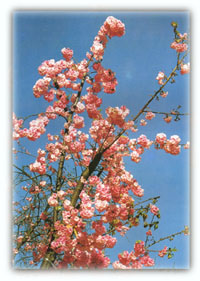 |
Surrounding the city there are also several hills. Yuantong Hill located in the northeast corner of Kunming is one of them. Covered with sturdy rocks and luxuriant plants, the hill in dark green resembles a snail, hence its other name, Luofeng (Snail Peak) Hill. Here you can find the largest Zoo in this province, which is home to over 100 species of wildlife, including some indigenous species, such as elephant, peacock, Parrot and leaf monkey. Also in the park are 150 kinds of plants whose blossoms decorate the park with a riot of colours. |  |
| Situated at the southern foot of Yuantong Hill is a temple by the same name, built during the Yuan Dynasty (1271-1368). Inside the gorgeous compound shaded by ancient pine and cypress trees are magnificent temple halls, clear ponds and elegant bridges. A stone staircase in front of the Mahavira Hall leads to a terrace where many inscriptions and carvings are found on the cliff face. | 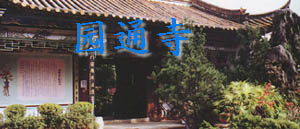 |
West Mountain
| "West Mountain" is a collective name give to the hills on the western bank of Danchi Lake- the Biyao, Luohan, Huating and Taihua, Which stretch over 40 kilometers. With craggy peaks, aged trees and ancient monasteries, these hills form a scenic zone of their own while serving as the enchanting backdrop of Dianchi Lake. Nestled in the hills are many scenic spots. |
|
|
|
|
| The cable car from Haigeng by the Dianchi Lake conveniently transports visitors up into the West Mountain. The Taihua Temple can be reached by turning right at the stop of Wanghai (Sea-Watching) Pavilion, half way up the hill. Taihua Temple stands out among all the temples in the West Mountain for its quiet setting and wonderful flowers. Many rare species of flowers can be seen in this temple, such as a special kind of camellia called "Precious Pearl", red magnolia and green petal plum blossom. Also noteworthy are the plum trees here whose leaves do not fall even in mid-winter. | 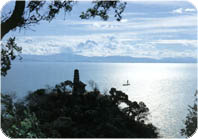 |
Huating Temple can be reached from Taihua Temple by walking about a kilometre along the highway. The complex of Huating Temple is more imposing than any other temple in the West Mountain. The structures are arranged in several levels with luxuriant bamboo groves growing around them, shading off the scorching sunshine. In the first level is the Tianwang (Deva Kings) Hall, in which the obese statue of Maitreya sits in the middle with the four Deva kings and two great guardians flanking him. The Mahavira Hall stands at the second level of the temple. In this tall and spacious hall are housed the statues of the serene Trikala Buddha, or the Buddha of the Past, the Present and the Future. Inscriptions, poems, couplets and calligraphic works left by literary figures of various dynasties all remain discernible.
 |
The path from the Sanqing Tower to the Dragon Gate is even more perilous. As the road is chiselled out on the cliff face high in the air, it seems that any careless step might make the visitor slide down the cliffs. The overhanging passageway finally arrives at the Datian (Attainment of Heaven) Tower at the end, also known as the Dragon Gate. Long Men (Dragon Gate), the characters carved on the stone become the popular name of the Datian Tower. |
| The "tower" itself is in fact a cave. All things inside the cave, including the ceiling, floor, tables, incense burners, candle stands, flower vases and other objects of sacrifices, and even statues of the gods, are chiselled out of the cliff rock. Outside the cave, a platform over two metres wide and more than three metres long are also carved out of the mountain body. The stone eaves of the Datian Tower are decorated with bas-relief depicting an immortal riding on a flying crane. It remains a puzzle for people today how the ancient builders and artisans managed to do the work, on the cliff dozens of metres high. |
|
|
The vast surface of Dianchi Lake looks a sea. Around the lake are a series of historical and scenic spots. Visitors can have a lake cruise from the dock at the end of Daguan Road in the Kunming City centre or reach any of the scenic spots by bus. |
A typical itinerary around the lake first leads visitors to ascend the Daguan (Grand View) Tower in the urban area, then on to see the Haigeng Park, the "Flower Village" of Chengong, the Panlong (Coiling Dragon) Temple, and then turn south to reach Kunyang, the hometown of Zheng He, a Ming-dynasty navigator. From there northward, it follows the west bank of the lake and goes through Tanglang (Mantis) Stream and Konggu Garden at Baiyukou. The last stop should be the Dragon Gate.
| The Grand View Tower |
|
|
The Grand View Tower stands on the northern bank of Dianchi Lake, two kilometres from the city centre, and can be reached by bus No.4. At the top of the tower, the beautiful waters as well as the West Mountain greet the eyes. |
|
Besides the Grand View Tower, there are other tourist attractions in the surrounding area such as the Cuigeng (Hasten Ploughing) Hall, Mumeng (Shepherd's Dream) Pavilion, and Caiyun (Colourful Clouds) Cliff. |
|
|
| The Largest Bronze Structure |
 |
The Parrot Hill is seven kilometres east of the Chuanxin Gulou and can be reached by bus No. 10. The most famous attraction of the hill is actually the Tongwa (Bronze Tile) Temple, commonly known as the Golden Palace. The bus stops at the Yingxian (Greeting Immortals) Bridge. From here visitors the hill along spiralling stone steps, passing through the Three-Heaven Gate. Built during the early years of the Qing Dynasty, it is the largest and best preserved bronze structure so far found in China. |
| The Golden Palace is 6.5 metres high. A model of flying double-eaves wooden pavilion in architectural style, all parts of this tower are cast from bronze, from its beams and columns to the sacrificial tables, and statues of gods. As the statues of God Zhenwu and others worshipped in the hall are gold-plated, the bronze structure as a whole gradually attained the name of Golden Palace. |
| Qiongzhu Temple |
| Qiongzhu Temple, seven kilometres from the city proper of Kunming, can be reached by taking bus No. 7 and alighting at Heilinpu stop. The architecture of the temple may look ordinary, but the 500 painted clay arhats housed in the temple never fail to deeply impress visitors. First built during the period of the Dali State (937-1253), the present structure was rebuilt in the Qing Dynasty. The vivid statues of arhats are masterpieces of that period. The 500 clay sculptures all looks lifelike with human features vividly reflecting feelings of happiness, rage, sorrow or sadness. |
|
The Black Dragon Pool
|
The Heilong (Black Dragon) Pool is located at the foot of the Laowu Peak of the Longquan Mountain, 14 kilometres from the city proper. |
|
|
It can be reached by taking bus No. 7 at Chuanxin Tower. The pool was fed by two minor springs. A small bridge spanning the pool separates the two springs on either side. On the nearby green slope stands the Longquan (Dragon Spring) Taoist Temple with three levels of magnificent halls. However, the greatest attraction to the Black Dragon Pool is the rare plants grown in the temple, namely, the Tang-dynasty plum tree, the Song-dynasty cypress, the Ming-dynasty camellia and the Qing-dynasty magnolia. |
Yunnan Ethnic Village
|
Yunnan Ethnic Village at Dianchi Lake in the suburbs of Kunming, contains the hamlets of eight ethnic minorities including the Dai, Va, Bai and Naxi, a song-and-dance hall, and a square for sports activities. Festivals such as the Water-Splashing Festival of the Dai and the Torch Festival of the Yi, are demonstrated here. |
 |
| The Stone Forest: A Karst Miracle |
| Almost no visitor to Kunming is complete without a stop at the Stone Forest, reputedly one of only a few major natural miracles under heaven. Driving southeast from Kunming for 126 kilometres, one enters the Lunan Yi Autonomous County, where, tucked away in the midst of green trees, is a mass of stone pillars protruding from the earth's surface. This is none other than the Stone Forest Tourist Resort, composed of the Greater Stone Forest, the Lesser Stone Forest, the Outer Stone Forest, and some other peripheral scenes, covering a total area of more than 300 square kilometres. | 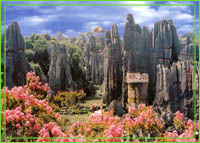 |
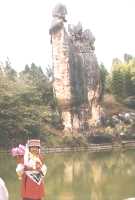 |
The Lesser Stone Forest, liked with the Greater Stone Forest, is no less breathtaking, but there is a palpable touch of elegance to its mass of stone prominences. The land here is relatively flatter, and there are also a few lawns. The huge rock known as Ashima Peak is situated there: it is in the image of a young woman carrying a bamboo-woven basket on her back. According to local legend, Ashima was a young Sani (a branch of Yi) woman, who was kidnapped by a rich man named Ribubala: her elder brother, Ahei, came to her rescue. When brother and sister fled to the Lesser Stone Forest, Ribubala, working in league with the God of Mountain Cliffs, unlashed a torrential flood. Ashima was drowned and turned into a huge stone. |
| It is possible to tour the Lesser Stone Forest at night. Hundreds of lamps toss their rays onto the stones of exotic shapes, transforming the place into a magic world. All the while the loudspeakers emit a melodious tone typical of the Sani music. The night scene of the Lesser Stone Forest is composed of the entrance, the Moon-Jumping Lawn, the Ashima Peak, and the Mystic Pond. | 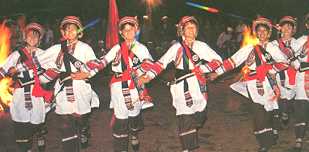 |
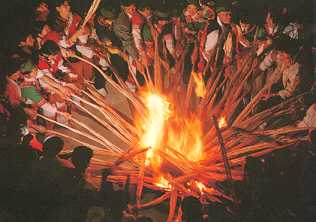 |
Of all the celebrations of the Torch Festival, those taking place at the Stone Forest are probably the most vivacious. During the festival, local people, old and young, men and women, turn out for a night of merry-making. When night falls, the Torch Festival reaches its peak and everyone begins singing and dancing by the bonfires while holding pine torches in their hands. |
|
|
The Outer Stone Forest is spread out on a vast rolling countryside. The stones assume a hundred and one shapes ranging from the statuesque to the grotesque. There are also rocks that bear close resemblance to camels, elephants, black bears, and tigers. |
|
The Stone Forest is typical of the karst land form, a wonder worked by nature. During the Carboniferous Period of the Paleozoic Era, this was the bottom of a vast sea. Later, with the movement of the earth's crust, the thick layer of pure limestone that formed the seabed gradually rose to become land. Long years of erosion by the elements finally transformed the limestone into a forest of stones in exotic shapes.
